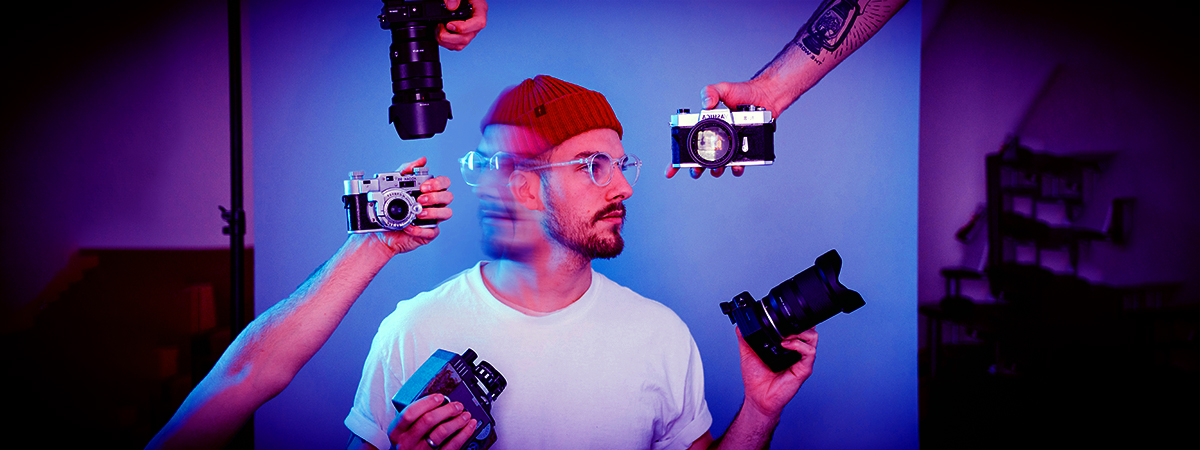The concept of personal branding is attributed to consultant and writer Tom Peters. Peters, in 1997, challenged people to use the branding principles of big companies to help themselves ‘stand out and prosper’ in the world of work.
Since then, the idea of a personal brand has evolved to be more than a marketing exercise. Instead, personal branding is an asset, building your credibility amongst peers, clients, employers or investors.
What do I need to create a personal brand?
Your personal brand makes you recognisable, relatable and reputable. If done well, personal branding defines your strongest attributes, goals and values, opening doors to opportunities with potential customers, collaborators or employers. Creating a personal brand doesn’t need to be expensive or time-consuming.
Here are six avenues for building your personal brand and reaching your target audience.
6 Personal Branding Assets
- Complete your social media profile
Completing a detailed social media profile is usually the first step in creating a personal brand. Most professionals start with their LinkedIn profile but spend your time and effort building your profile on the platform used by your target audience. For example, working on your Pinterest page would be more beneficial than your LinkedIn profile if you’re building your personal brand as an interior designer. On the other hand, if you’re establishing yourself as a photographer or fashion designer, Instagram may be more suitable.
Completing your social media profile allows your target audience to see who you are, ask you questions and check out your work before deciding to work with, hire, or refer you. So it’s crucial to fill out your profile with compelling copy and images. - Create a personal website
Social media profiles are a great starting point for showcasing who you are and your work. Still, they have limitations, especially if you want to share large amounts of original content or own the design assets promoting your work. If you’re a graphic designer, a sought-after speaker or a consultant, having a personal website gives you control of your image and lets you provide social proof of your work without dealing with limits set by social media platforms. - Define your brand ‘look’
Bill Nye has his bow tie and Billy Ray Cyrus has his cowboy hats; professionals across various industries create a brand look that defines who they are. Oprah’s signature with the large ‘O’ is globally recognised. Designing your brand look can include your appearance; you could choose a colour palette that suits you and use that colour palette across your wardrobe, social media, and website. Others have chosen logos and typography and also something known as tone of voice. Your tone of voice relates to the language you choose and the tone in which you present yourself. So, for example, if you want to move into the C-Suite, ensure your written or spoken language is audience-appropriate. In addition, choose imagery and colours that reflect who you are and your goals, so they make maximum impact. - Start a blog
Creating a personal brand is all about telling your target audience who you are and how you can help them. Blogs allow you to dispense advice and educate your target audience, demonstrating your expertise and building brand trust. In addition, a blog shows your personality and what makes you unique. Make sure your blog matches your brand tone of voice, the content adds value to your audience, and you create content consistently; no point in starting a blog if you’re only going to write one and then call it a day. Great tools help you map out content ideas for your target audience, including Answer the Public and Hubspot Blog Ideas Generator. - Try video, webinars or live streaming
Video, webinars and live streaming help you build connections with your audience; they get to see and hear you speaking about your area of expertise. Live content allows you to interact with your audience and hear exactly what they want and need. Webinars that add value become evergreen content for your brand. - Get found with SEO
Search engine optimisation (SEO) ensures you can be found easily online. After all, there’s not much point in creating a website or social media profile if no-one can find you. Keyword research should be a part of creating your personal branding content.
Keyword research is the process of researching search terms popular with your audience and strategically using them in your content. For example, suppose you’re an expert in renewable energy and want to attract hiring managers to your website or LinkedIn profile. In that case, you should include keywords your target audience will use to search for someone like you. If you’re struggling to think of keywords, free keyword research tools can help.
Once you’ve decided on your keywords, use them across your social media channels, website and content. Hubspot recommends including your keyword in your LinkedIn header and two to three times in the “About” section.
Creating a personal brand to enhance your professional profile to attract potential clients, employers or collaborators involves understanding how brand elements can communicate your values and unique offering. Investing time in creating a personal brand gives you a competitive edge and ensures your personal brand becomes an asset in its own right.
Viabrand®is your experienced Brisbane marketing team and branding agency. Our marketing team are expert in all areas of branding and marketing. Book a complimentary, no-obligation 30-minute call to learn more: https://calendly.com/viabrand/30min
